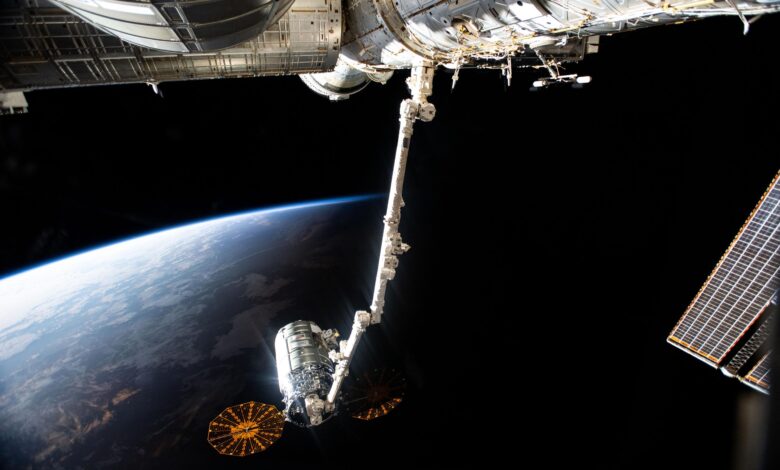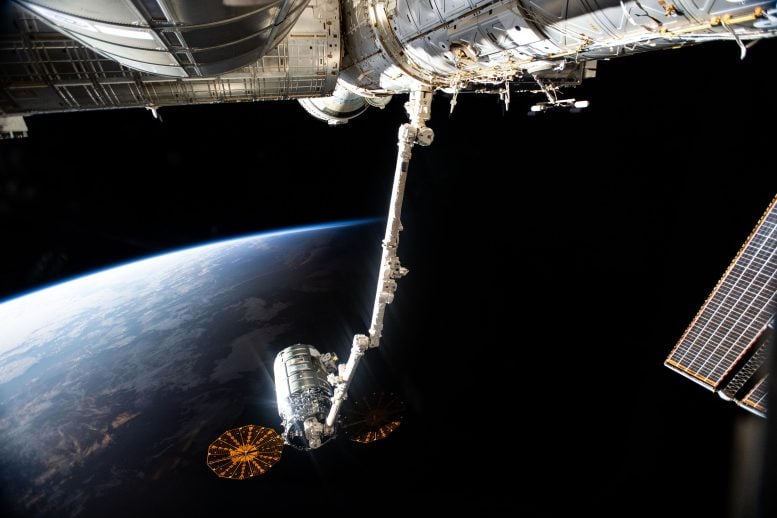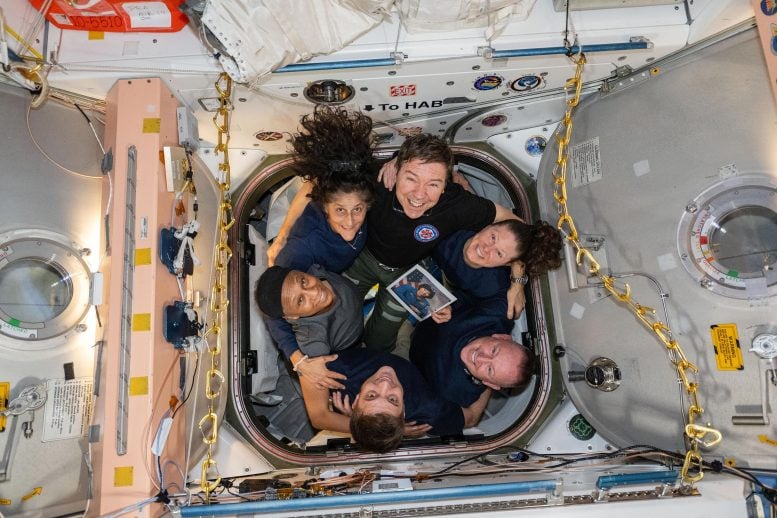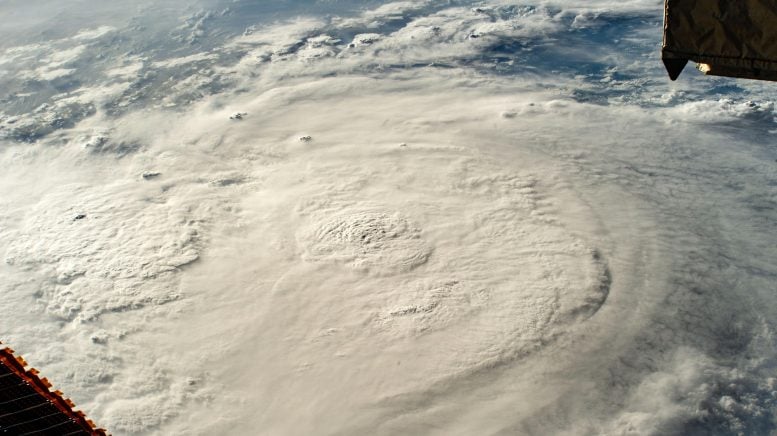Expedition 71 Tests New Frontiers


Northrop Grumman’s Cygnus space freighter is pictured attached to the Canadarm2 robotic arm ahead of its release from the International Space Station’s Unity module. The orbiting lab and Cygnus were soaring into orbital daytime as this photo was taken. Credit: NASA
Expedition 71 involved astronauts in spacesuit maintenance, medical research, and experiments to enhance manufacturing and agricultural techniques in microgravity aboard the ISS.
The Expedition 71 crew kicked off the week with life science and spacesuit checkouts aboard the International Space Station (ISS). The orbital septet also juggled a variety of maintenance duties including life support tasks and lab inspections.
Starliner Commander Butch Wilmore and Pilot Suni Williams, both NASA astronauts, participated in vein scans using the Ultrasound 2 device on Monday. Doctors on the ground monitored in real-time as the pair took turns imaging each other’s neck, shoulder, and leg veins. Afterward, Wilmore scanned the veins of NASA Flight Engineer Matthew Dominick helping researchers understand how microgravity affects the human body.

Clockwise from bottom, NASA astronauts Matthew Dominick, Jeanette Epps, Suni Williams, Mike Barratt, Tracy C. Dyson, and Butch Wilmore, pose for a team portrait inside the vestibule between the Unity module and the Cygnus space freighter from Northrop Grumman. Dyson holds a photograph of NASA astronaut Patrica Hilliard for whom the Cygnus spacecraft, S.S. Patricia “Patty” Hilliard Robertson, is named after. Credit: NASA
Wilmore and Dominick also spent a portion of the day taking inventory of the food stored aboard the space station. Additionally, Dominick worked in the Columbus laboratory module checking the power supply and transferring computer files on the European Drawer Rack, a science facility that can host a variety of experiments controlled remotely from the ground or operated by station crews.
Williams worked on a pair of differing studies as she first explored using the microgravity environment to manufacture higher quality optical fibers than on Earth. At the end of the day, Williams also investigated using fluid physics such as surface tension to overcome the lack of gravity when watering and nourishing plants grown in space.

Hurricane Beryl is pictured as a Category 1 storm above the Yucatan Peninsula from the International Space Station as it orbited 262 miles above the Gulf of Mexico. Credit: NASA
NASA Flight Engineer Jeanette Epps first order of the day was life support work replacing gear inside the Tranquility module. Later on, she recorded a video for junior and high school students demonstrating how astronauts conduct DNA research in space.
NASA Flight Engineers Tracy C. Dyson and Mike Barratt took turns on Monday servicing spacesuit components in the Quest airlock. The duo checked out newly installed parts, conducted leak checks, and reconfigured the spacesuit life support systems. The astronauts wrapped up their day checking out the spacesuit jetpacks that would be used in the unlikely event a spacewalker became untethered from the orbital outpost.
The three cosmonauts from Roscosmos worked throughout Monday collecting and organizing a variety of inspection gear. Flight Engineers Nikolai Chub and Alexander Grebenkin kicked off the work reviewing the operation of some of the inspection hardware. Chub then joined Commander Oleg Kononenko to prepare for upcoming inspections in the lab’s Roscosmos segment.
Kononenko began his day on cardiac research attaching sensors to himself that recorded his activity while relaxing. Grebenkin wrapped up his day in the Nauka science module cleaning smoke detectors. Chub also joined Dominick of NASA and trained to use an ultrasonic inspection device.



